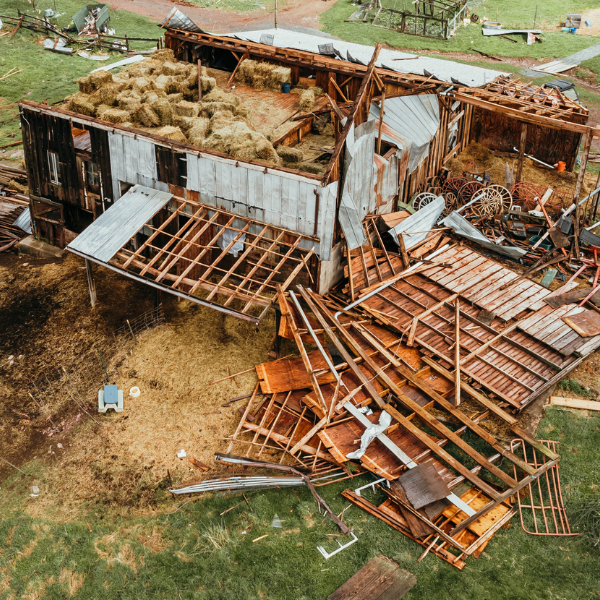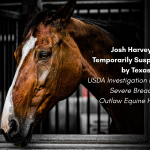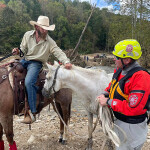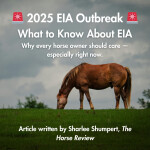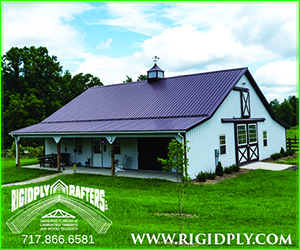The storms and tornadoes that ravaged the Mid-South Friday, March 31, 2023 into early Saturday morning on April 1, 2023 left many horse owners and caregivers reeling. Although forecasted, these storms produced unpredictable winds and tornadoes with little warning. Equine owners throughout the region were left with little time to prepare for these storms.
In severe weather situations, we know the best place for ourselves: inside, on the lowest floor or basement, in an interior room. Many have a storm or disaster plan for ourselves and our family. However, when it comes to our horses, we can make preparations and plans too.
First, when severe weather is forecasted, horse owners and caregivers must decide what is best for their equines: inside or outside? Turning your horses out in a large, open pasture gives your horses an opportunity to get out of the storm’s path. Being flight animals, horses instinctively will flee from immediate danger. If tall trees are present in the pasture, they can serve as lightning rods to help decrease the chance of the horse itself being struck. However, turning out in a large pasture can also put the horse at risk; falling trees, flying debris, or damaged fences can all be threats.
If your horse is unaccustomed to being in a large pasture, keeping it stalled may be the best option to decrease its anxiety during the storm. However, keeping horses in a stall during severe storms raises the risk of the horse being injured if the barn becomes damaged. Brick and concrete barns have a better chance at sustaining high winds than metal structures do. Local barrel racer, Lexi Henderson, says she leaves her horses turned out during storms “because it’s safer in case something were to fall on our barn, like a tree, or if it were to get struck by lightning.”
No matter where you choose to keep your horse during severe weather, consider tagging it with your name and phone number. This can be done in a variety of ways. A breakaway halter with your name and contact information can be put on every horse. If you are concerned about the possibility of the halter becoming caught on something, like a fence post or tree branch, you can use a livestock paint marker to write your phone number directly onto the body of your horse. If your horse were to get out of the barn or pasture, people will be able to read your number directly off your horse, even if they cannot catch the horse itself. Another option is to go to your local pet store and purchase a dog identification tag with your contact information printed directly on the tag. This tag can then be braided into your horse’s mane or tail.
Other disaster preparedness tips for horse owners and caregivers include keeping extra feed and water on hand if possible. Roads can quickly become impassable after a tornado, so running to the feed store may not be possible for a few days. Portable water containers and emergency water storage tanks are available to keep in the barn in case water lines are damaged.
Keeping your fences well-maintained during storm season is another important way to stay prepared. Limbs kept cut back off the fence line can help ensure the integrity of your fence when the wind starts to blow. Investing in temporary panels is a good idea if you do not already have a round pen. If you were to experience the collapse of a barn or a break in your fence after the storm moves through, temporary panels will allow you to easily set up a short-term stall or area to house your equine.
Jonathan Fortenberry, Risk Manager and Insurance Agent for American National, cautions you, from a preventative standpoint, to let your insurance company know the value of your barn, shed, or other buildings or structures on your property, including the fence as well. If your property does sustain damage, Jonathan suggests following these steps. First, file a claim and let your insurance know what structures are damaged. Next (and only if you can do so safely), protect and preserve your property that’s not damaged, and take plenty of pictures and videos of property that is damaged. If your property is unlivable, or a building on your property can no longer produce income you depend on, your homeowner’s policy or farm policy may cover those living expenses. Finally, begin getting estimates, but Jonathan recommends refraining from signing any contracts until you talk to your adjuster.

